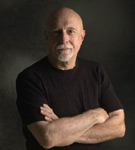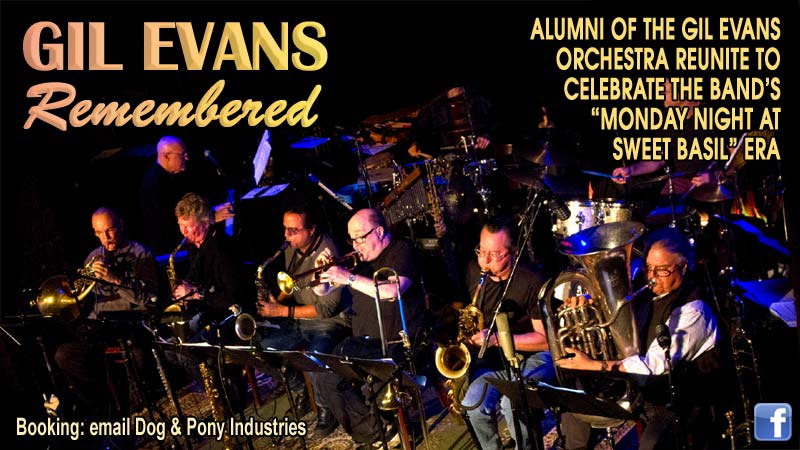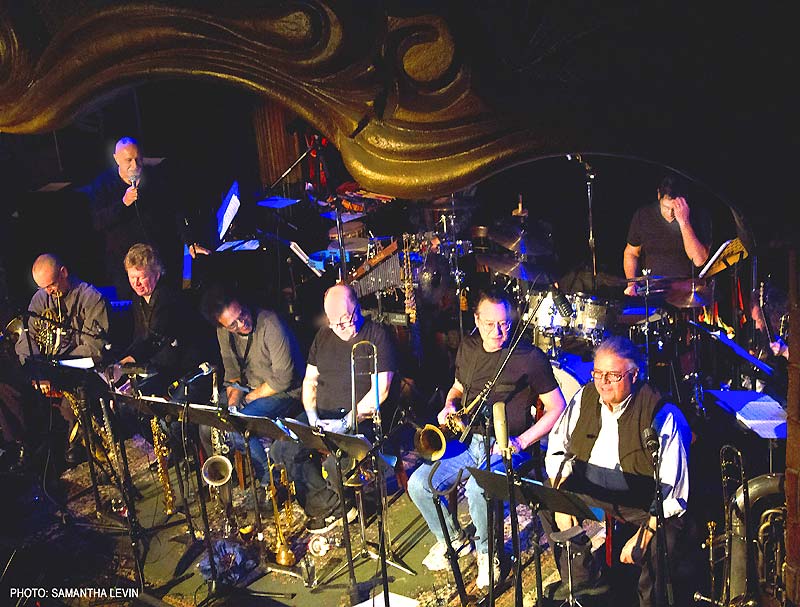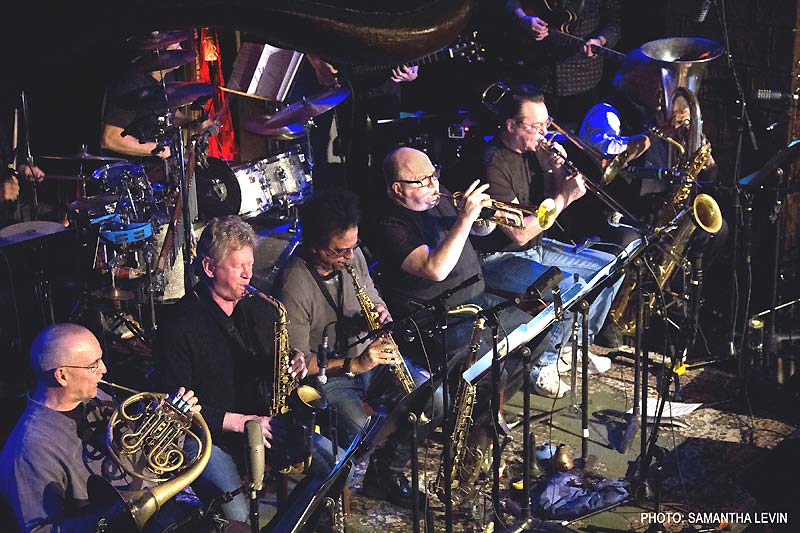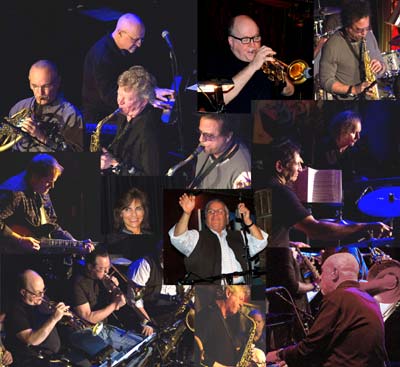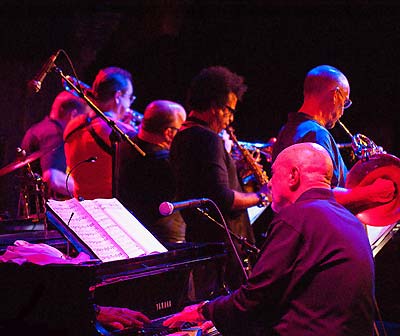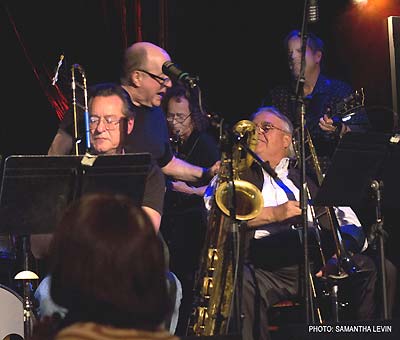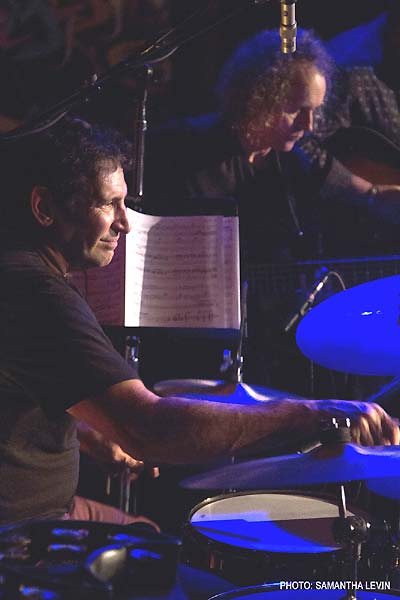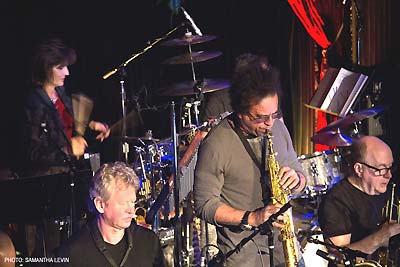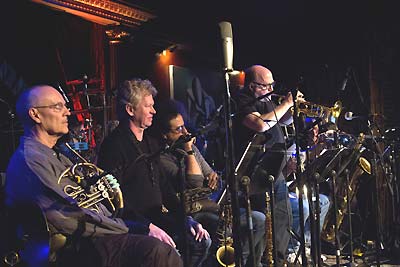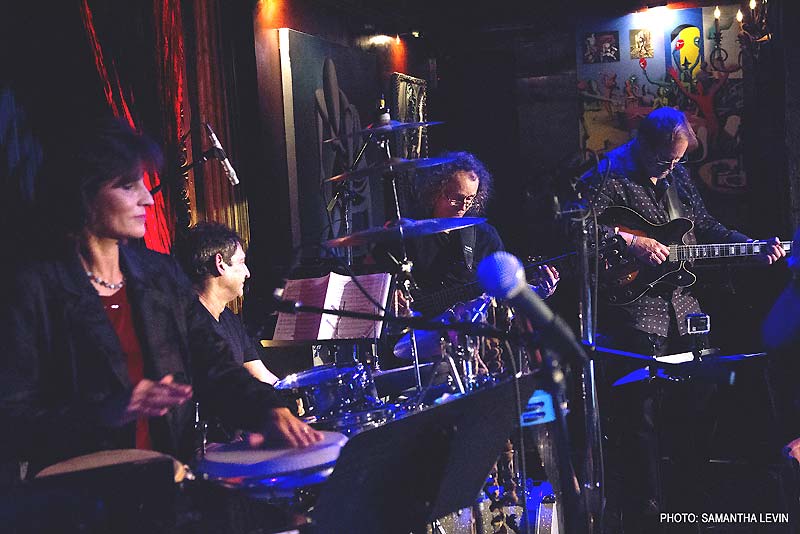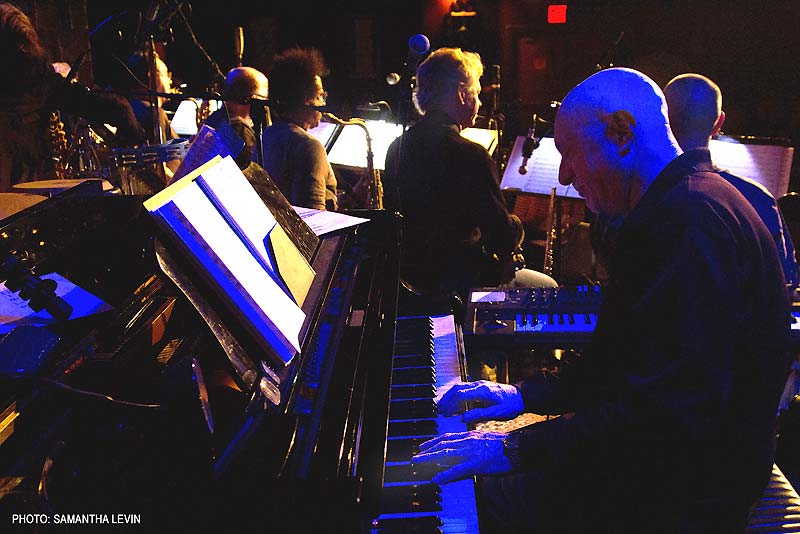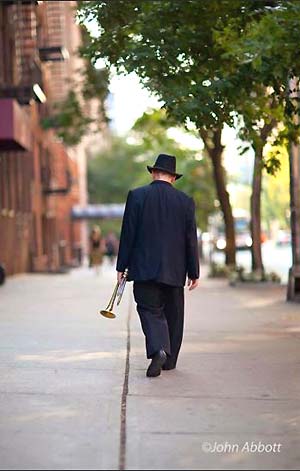|
Gil Evans
Remembered: Live At The Cutting Room, NYC
Album review by
Jack Kenny
• All About
Jazz • November 26,
2024
 Few people have a better right to remember Gil Evans than
these musicians. The serrated wail of this band enraptured,
touched and torched the listeners. It is easy to see why
musicians from the Monday Night Band would want to play,
creating under Evans' beatific musical vision. It must have
been inspiring. Most of the musicians on the album played
sometime over the years at Sweet Basil from 1983 to Evans'
death and even beyond. He loved the way that the band
sounded, teetering on the edge of formlessness before
coalescing into something definite, the process of becoming. Few people have a better right to remember Gil Evans than
these musicians. The serrated wail of this band enraptured,
touched and torched the listeners. It is easy to see why
musicians from the Monday Night Band would want to play,
creating under Evans' beatific musical vision. It must have
been inspiring. Most of the musicians on the album played
sometime over the years at Sweet Basil from 1983 to Evans'
death and even beyond. He loved the way that the band
sounded, teetering on the edge of formlessness before
coalescing into something definite, the process of becoming.
How did Evans inspire them? He had moved slowly, and
controversially, from the precision writing of "Sketches of
Spain" music with Miles Davis to a looser, wilder
freewheeling sound. John Surman said recently,: "Having been
lucky enough to have toured a few times with Gil's band, I
have often wondered exactly what he was doing to make the
band work as well as he did. It certainly wasn't anything
that he said—I can hardly recall him saying anything much
about the music. I guess he just wanted us to listen to each
other and develop the music together as we felt it."
Lew Soloff also talked about Evans as if he was talking
about Duke Ellington. He said Evans thought about the
individual musicians rather than just the instruments. "What
Gil liked to do was to think of the person. He didn't think
of the tuba he thought of Howard Johnson. He didn't think of
a saxophone sound, he thought of George Adams." Soloff said
that Evans wanted individual sounds. "He wanted the
particular people he hired to sing this thing together in
their very own individual manner."
Dave Bargeron, talking to Evans' biographer, said: "This is
not like free jazz was in the late '60s. It's not that. This
is relating in your own personal way to whatever the core of
this is that's going on. That's quite different. There are
some organizing elements of this that pull you in and help
you along. There is usually a mood that's played on, if
nothing else. There are usually chord changes, there is
usually some kind of set context that the tune is about.
There are organizational factors that are a step more
organized than just playing free jazz. You're encouraged to
play as freely as you can against this core. That's the
deal."
There are some important voices missing on the album: Hiram
Bullock, Adams, Howard Johnson, David Sanborn, all dead.
Other prominent jazz musicians flitted into the club
occasionally: Johnny Coles, Marvin "Hannibal" Peterson, Gil
Goldstein.
They came to play the music. Two of the pieces here are by
Evans; one by Jaco Pastorius who worked with the band
occasionally; one by Charles Mingus; two by Jimi Hendrix and
"Nana" by Brazilian composers Moacir Santos, Mario Telles
and Yanna Cotti.
The lemony alto sound of Chris Hunter dominates "La Nevada,"
together with Dave Stryker and the bass settings of Mark
Egan. The simple but rich theme is inspiring. The noirish,
slightly sinister, opening to "London" is played by Pete
Levin and backed by the deep brass of Bargeron and Tom
Malone. The build-up includes Stryker's guitar. This is
probably the best (and longest) arrangement on the album.
The French horn solo of John Clark gives cool relief. There
is intense drama in the way that the ensemble builds behind
the horn. The whole arrangement has a profound, pungent,
inexorable beautiful shape.
The noble Mingus theme "Goodbye Pork Pie Hat" was colonized
by Evans. The introduction is played by Levin. He is too
good, too professional, lacking the tentative feel of Evans'
piano playing. The solo by Soloff is a reminder of how
frequently the great trumpeter played with the band. The
tenor solo by Alex Foster has faint pointers in the
direction of Adams, but is wholly Foster. The ensemble
playing including the deep brass graces the melancholy
beautiful composition and arrangement.
Hendrix had a profound impact on Evans. Evans said that he
heard the wail and scream of the blues in the music of
Hendrix. Pieces by Hendrix became an essential part of the
band's book. The excoriating solo from Hunter on "Stone
Free" has the edgy quality that Evans loved in Hunter's
playing, suiting exactly the Hendrix piece.
The Danny Gottlieb and Beth Gottlieb percussion team opens
"Nana." Evans discovered the theme on a Brazilian album by a
singer called Nara Leão. It is easy to see why Evans and the
band chose to use this powerful theme and Soloff enjoys
soloing in his go-for-broke playing over the weighty rhythm.
The clarity of the recording shows the complexity of the
arrangement.
Those blessed enough to meet up with the Monday Night Band,
live, will remember the sensation and leaps of pleasure as
the band pulled their diversity triumphantly together to
realize the power and beauty of their playing. There is
enough of that glistening in this beautifully recorded album
to whet the memory. |
|
Gil
Evans Remembered
album review
by
George W. Harris • Jazz Weekly • September 5, 2024
 Pianist
Pete Levin salutes his days with the famous Gil
Evans Orchestra by reuniting with some of the alumni on
this fun and swinging recording of a gig at NYC’s Cutting
Room. This band was best known for it’s weekly Monday
night events at Sweet Basil, which became a kind of
musical institution at the time. The team of Dave Bargeron/tb-tuba,
John Clark/frhrn, Mark Egan/b, Alex Foster/ts-ss,
Beth
Gottlieb/perc, Danny Gottlieb/dr, Chris Hunter/as-fl,
Tom
Malone/tb-bs, Lew Soloff/tp and Dave Stryker/g are in
inspired form, with Stryker sizzling with Hunter on the full
bodied read of “La Nevada” that has Levin open things up in
a glorious suspenseful mode. A real eyebrow raiser is the
bold horn section read of “Goodbye Pork Pie Hat” while Egan
slithers like an anaconda around Jaco Pastorius’ “Teen Town”
with Malone. The brass boogies through “Nana” with the best
of the night are a pair of Jimi Hendrix tunes, as Levin
glistens on “Little Wing” and Foster sears through a
hilariously fun read of “ Stone Free”. Oh, yeah, now I
remember that music can be fun! Pianist
Pete Levin salutes his days with the famous Gil
Evans Orchestra by reuniting with some of the alumni on
this fun and swinging recording of a gig at NYC’s Cutting
Room. This band was best known for it’s weekly Monday
night events at Sweet Basil, which became a kind of
musical institution at the time. The team of Dave Bargeron/tb-tuba,
John Clark/frhrn, Mark Egan/b, Alex Foster/ts-ss,
Beth
Gottlieb/perc, Danny Gottlieb/dr, Chris Hunter/as-fl,
Tom
Malone/tb-bs, Lew Soloff/tp and Dave Stryker/g are in
inspired form, with Stryker sizzling with Hunter on the full
bodied read of “La Nevada” that has Levin open things up in
a glorious suspenseful mode. A real eyebrow raiser is the
bold horn section read of “Goodbye Pork Pie Hat” while Egan
slithers like an anaconda around Jaco Pastorius’ “Teen Town”
with Malone. The brass boogies through “Nana” with the best
of the night are a pair of Jimi Hendrix tunes, as Levin
glistens on “Little Wing” and Foster sears through a
hilariously fun read of “ Stone Free”. Oh, yeah, now I
remember that music can be fun! |
